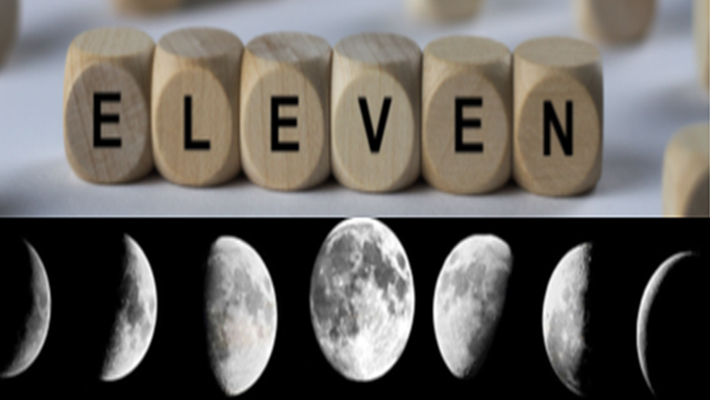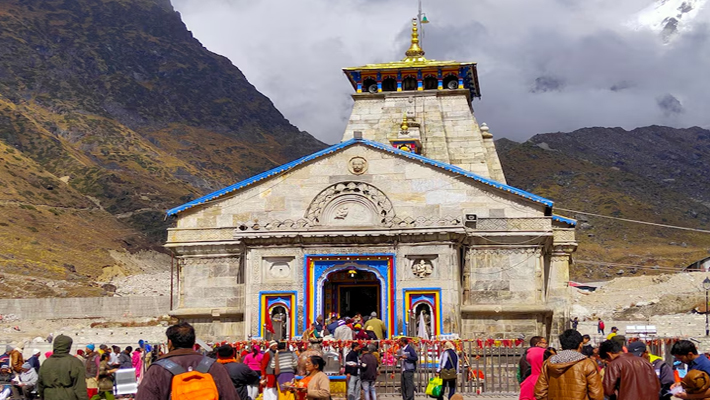
Rituals are increasingly fading from contemporary metropolitan civilization, but they are luckily kept alive among some simple people with a traditional bent of minds mostly from the rural areas.
We, the civilized lot, fail to understand the relevance of certain rituals and are too egotistic to investigate or discover the true meaning of these rites and to follow them.
When we have no reasonable explanation to do a particular rite in a certain way, we avoid doing those rituals altogether for fear of being regarded as archaic or lacking in comprehension.
We begin to ask questions and label them as superstitious baseless ceremonies.
Now is the appropriate time for us to delve into the meaning of rituals established by our ancestors to improve our quality of life.
Let us begin by discussing the significance of Ekadashi in Indian culture.
On Ekadashi days, many people fast. It is a widely prevalent ritual, but definitely not well understood. The Sanskrit term for the number 11 is Ekadashi.
In the lunar calendar, it represents the 11th day of each half-month. So, each month has two Ekadashi days: one in the early half of the month when the moon is waxing and one in the second half of the month when the moon is Waning.
These days are really important in terms of health. Ordinary people would not have obeyed such dictums if they were not affiliated with religion. It is best to limit food consumption on Ekadashi days to offset the influence of the moon's impact on the human body, as our bodies are 60-70% water.
The Ekadashi observance was presented as an astrological phenomenon, and it was discovered that planets had a substantial impact on a human's physiological and psychological qualities. The relationship with which humans function as a result of planetary energy is a fascinating subject which most often is disregarded as pseudoscience.
The movement of the planets has a significant impact on our entire psyche. As we all know, at any given time, the astronomical objects in the universe are in relative motion with our planet earth, creating an energy current to circulate through all living and non-living organisms on world; there is no such thing as a static planet. So, even our sun is not a stationary ball of fire. According to scientists, the entire solar system is moving and speeding towards a massive star eighty million times larger and brighter than the sun, the light of which has yet to reach us. We must comprehend that planets move relative to one another and that we are continually impacted by them as long as we live on Earth and will be continuously subjected to the effects caused by them exerting a powerful impact on humanity.
The sun is considered to impact the core of our personality, which is why it was given the name Atmakaraka. The sun has the ability to influence our entire existence. Karaka is the doer, manipulator, and director.
So much so that the moon is considered as a mind-influencer. Material things make up the mind. The mind becomes more focused on material pursuits. The ripples on the water's surface represent the movement of the mind. It's impossible to say where it starts, how it starts and where it stops.
Planets basically are not spiritual bodies, yet their vibrations and currents they generate may have a significant impact on our psyche. The moon is the reigning deity of the mind since all mental waves are caused by the movement of the moon.
Ekadashi is particularly pertinent to this moon-mind relationship. The moon impacts the psyche through its orbital relative movement to other planets.
So, how does this Ekadashi relate to the movement of the moon and the mind?
The Chakras are energy centers located on our astral body. They are a rotatory field of circular currents that whirl in the same way that water whirls in a river. Chakras are so-called because they spin in a circular pattern. They move in a spiral motion. They are not physical, but rather psycho-physical and psychological in nature. These Chakras are located in the astral body, not the mind or the body. The moon's physical influence on the body has an effect on the Chakras, which eventually has an effect on the mind. The mind traverses through these chakras up and down.
When the movement of the mind through the chakras is done consciously, then it is called YOGA. When done unintentionally, it is referred to as just an influence.
When the moon waxes or wanes, the mind is strongly impacted. As a result, those who are not mentally normal become extremely disturbed on full-moon and new-moon days.
The moon has an impact on the entire planet, but it is more noticeable on liquids than on solids. This can be observed on seas and oceans where tides and waves of various heights are formed based on the earth-moon relationship.
The orbital routes of the sun, moon, and earth and their fluctuating distances at specific intervals (i.e., every 24 hours for one full rotation of the Earth) result in dramatic changes in the atmospheric pressure on a day-to-day basis. The nature of the tidal waves’ changes on new and full moon days to demonstrate this.
Because of the rise in air pressure in the waters during an Amavasya, the waves are quite high and harsh. However, the waves settle down the next day -indicating that the atmospheric pressures have reduced.
The atmospheric pressure is particularly low or non-existent on the 11th day after a new or full moon. Based on this, the importance of Ekadashi fasting can be explained:
There are several ways to compute a month in the Indian Vedic system. One such method is to start counting from the new moon day (Amavasya). Shukla Paksha (waxing/growing moon) lasts from the new moon to the full moon. Krishna Paksha (waning/shrinking moon) lasts from the full moon day until the next Amavasya.
Let us now look at some more facts about the 11th day between the full and new Moons. The Earth and moon rise and set at the same moment on Amavasya in the celestial phenomenon. From the next day till the Pournami, the moon moves around 12 degrees away from the solar path. On Ekadashi (the 11th day after the full moon), the Moon remains at a distance of around 135 degrees in the solar path, due to the earth`s spheroid /ellipsoid shape, causing less gravitational pull and hence decreased air pressure.
As a result, fasting on Ekadashi day has no ill effects on the bodily system. On the contrary, the body goes into an auto detox mode. It becomes ready to perform the monthly maintenance activity of purging away unwanted toxins.
Since the body is highly active doing the purging work, we should effectively not feel hungry on that day. Due to our inability to understand the subtle functions, we have become insensitive to understand the difference between feeling hunger and wanting to enjoy the taste of food resulting in us eating all the time even when it is not necessary.
Shouldn’t we assist our body in doing its work by not feeding ourselves?
The process of not eating food for the said period is called FASTING.
On Ekadashi days, air pressure is lowest compared to any other day of the lunar cycle.
As a result, this is the greatest time to fast and detoxify our bodies.
If we fast on any other day, the high pressure or strain on our system may be detrimental. On this day, we should allow our entire body mechanism to get rejuvenated, particularly the liver, stomach, and colon.
To minimize difficulties in the body, it was encouraged to have meals with good quantity of iron and minerals as early in the morning as feasible on the next day, as the atmospheric pressure rises up quickly and doubles on the 12th day from Amavasya / Poornima days (called Dwadashi). Fasting on this day too is also highly beneficial, also it makes it easier to focus on meditation and prayers. Hence eating or drinking food on
Ekadashi was brought in as a ritual to be followed to benefit our healthy lifestyle.
According to scientists, it takes around 3-4 days for the brain to comprehend our food consumption after we have eaten. It is stated that if we eat light / fast on Ekadashi days, that intake will reach the brain on the new moon / full moon day in proportions and clear the ripple factors in our mind.
Fasting causes a multitude of metabolic changes which has both medicinal and religious importance in India from cleaning the bowels to expelling the pollutants from the body.
Those who fast on Ekadashi days maintain good health, cleanse their intestinal systems, and are generally clear of common diseases. It is also stated that for those on the spiritual/religious path, fasting during Ekadashi days brings mental serenity via self-realization. This type of penance is said to help people on their spiritual path, making them clean in body and mind. One feels more energized and alert, as well as more resistant to all types of sickness or illness. It even slows the aging process, which is caused by the cumulative impacts of our poor habits or inappropriate ways of life.
Fasting day develops self-control and discipline. It considerably aids in the breakup of destructive addictions and the formation of new, beneficial behaviors enforcing a healthier lifestyle.
List of Ekadashi: The Day of Lord Hari
The day is dedicated to Lord Vishnu- The protector
Our ancient scriptures bring out the various kinds of vratha sadhana procedures to observe and the outcomes of following the fast meticulously.
1.Uthpana –Krishna Paksha 2. Mokshada- Shukla Paksha (VAIKUNTHA EKADASHI) (November- December)
3.Saphala—Krishna Paksha 4. Putrada- Shukla Paksha (December- January)
5.Sat-tila----Krishana Paksha 6. Jaya / Bhaimi Shukla Paksha (January- February)
7.Vijaya----Krishna Paksha 8. Amalaki---Shukla Paksha (February- march)
9.Paapmochani---Krishna Paksha 10. Kamada- Shukla Paksha (March- April)
11.Varutini----Krishana Paksha 12. Mohini --- Shukla Paksha (April- May)
13.Apara-----Krishna Paksha 14. Nirjala---Shukla Paksha (May- June)
15.Yogini-------Krishna Paksha 16. Sayana / Padma –Shukla Paksha (June- July)
17.Kamika ----Krishna Paksha 18. Putrada---Shukla Paksha (July- August)
19.Aja / Annada –Krishna Paksha 20. Parivartini / Parsva Shukla Paksha
(August- September)
21.Indira---Krishna Paksha 22. Papankusha Shukla Paksha
(September- October)
23.Rama--- Krishna Paksha 24. Haribhodini / Dev-Utthana Shukla Paksha
(October- November)
Adik maasa EKADASHI
25.Padmini 26.Parama
We will be discussing these Ekadashis in depth in our upcoming blogs, as well as the background information behind the vratha processes and foods that may be consumed to help you achieve your varied material and spiritual pursuits.







